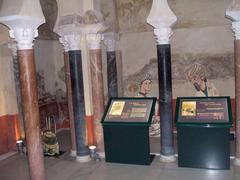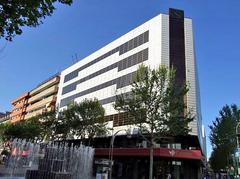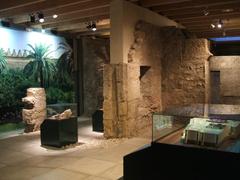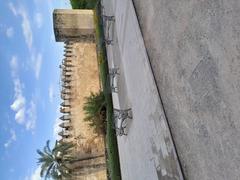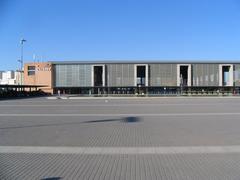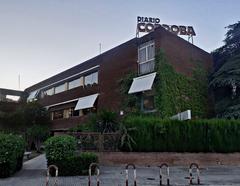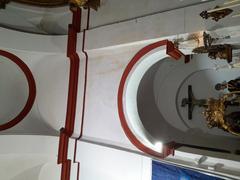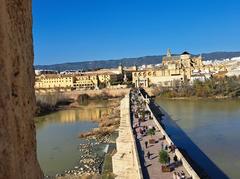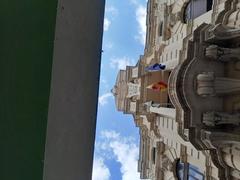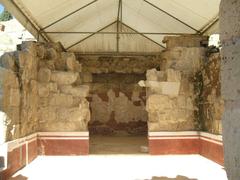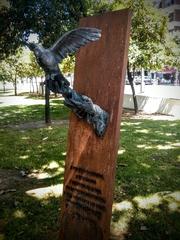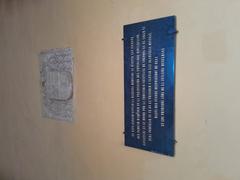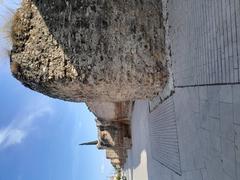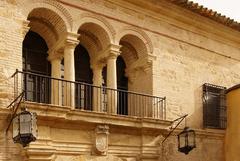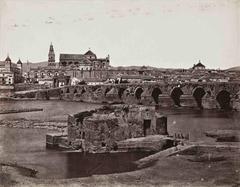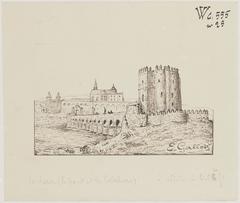Museo Arqueológico de Córdoba: Visiting Hours, Tickets, and Comprehensive Guide to Córdoba’s Historical Sites
Date: 03/07/2025
Introduction
Nestled in the vibrant heart of Córdoba, Spain, the Museo Arqueológico de Córdoba is a testament to the city’s rich and multi-layered past. Set within the elegant 16th-century Renaissance Palace of Páez de Castillejo and uniquely incorporating the remains of the ancient Roman theatre beneath its floors, the museum offers visitors a remarkable journey through time. Its extensive collections, ranging from the Lower Paleolithic to the Islamic period, provide insight into Córdoba’s evolution as a crossroads of civilizations.
This guide provides an in-depth look at the museum’s history, cultural and architectural significance, practical visitor information—including opening hours, ticketing, and accessibility—as well as recommendations for nearby attractions and travel tips. Whether you’re a dedicated history enthusiast or a first-time visitor to Córdoba, this article will help you make the most of your visit to one of Spain’s most celebrated archaeological museums (artencordoba.com, turismodecordoba.org, Disfruta Córdoba).
Table of Contents
- Discover the Museo Arqueológico de Córdoba: Visitor’s Guide
- History and Development
- Architectural and Cultural Significance
- Visitor Experience
- Frequently Asked Questions (FAQs)
- Plan Your Visit
- Summary & Travel Tips
- References
Discover the Museo Arqueológico de Córdoba: Visitor’s Guide
Visiting Hours and Ticket Information
The museum operates on a seasonal schedule:
-
June 16 to September 15:
- Tuesday to Sunday: 9:00 – 15:00
- Monday: Closed
-
September 16 to June 15:
- Tuesday to Saturday: 9:00 – 21:00
- Sundays and public holidays: 9:00 – 15:00
- Monday: Closed (except for holiday eves)
Admission Fees:
- EU Citizens: Free (ID required)
- Non-EU Citizens: €1.50
- Guided Tour: €17 per person
Tickets can be purchased at the museum entrance or online via the official website.
Accessibility and Visitor Tips
- Accessibility: The museum is fully accessible, with ramps and elevators throughout the Renaissance palace and modern annex. Some areas of the Roman theatre ruins may have uneven surfaces.
- Audio Guides & Brochures: Available in Spanish, English, and other languages.
- Best Time to Visit: Mornings on weekdays are quieter.
- Facilities: Cloakroom, restrooms, gift shop, and seating areas available.
Nearby Attractions
The museum’s central location makes it easy to combine your visit with other historical sites:
- Mezquita-Catedral de Córdoba (Mosque-Cathedral)
- Roman Bridge
- Alcázar de los Reyes Cristianos
- Museo de Bellas Artes de Córdoba
- Plaza de la Corredera
- Templo Romano de Córdoba
History and Development
Origins and Early Development
The museum’s origins date to the mid-19th century amid a growing national movement to safeguard Spain’s archaeological treasures. In 1844, following ecclesiastical confiscations, an initial “Antiques Collection” was formed from artifacts sourced from local convents and monasteries. The official establishment of the Provincial Archaeological Museum occurred in 1867, making it one of the earliest archaeological institutions in Spain. Over subsequent decades, its collection expanded through local discoveries, donations, and state acquisitions (artencordoba.com).
Institutional Growth and Location Changes
Initially sharing space with the Museum of Fine Arts, the archaeological collection moved several times to accommodate its growth—first to San Juan de Letrán Square in 1920, then to Samuel de los Santos Gener Street in 1925, before finally settling in the Renaissance Palace of Páez de Castillejo in 1960. In 1962, both the building and collection were declared an “Artistic Historical Monument” (artencordoba.com).
Architectural and Cultural Significance
Renaissance Palace of Páez de Castillejo
Constructed in the 16th century, the palace is a prime example of Andalusian Renaissance architecture, featuring two arcaded courtyards, grand staircases, and ornate façades. The building’s adaptive reuse as a museum preserves both its historical and aesthetic value (cordoba24.info).
Contemporary Expansion
A significant modern annex, opened in 2011, expands exhibition space by up to 1,900 square meters. This glass-and-concrete addition complements the Renaissance structure and allows seamless movement between historic and contemporary environments (turismodecordoba.org, diariocordoba.com).
Further expansion projects are planned, aiming to improve research facilities and public access to the Roman theatre remains (abc.es).
The Roman Theatre
Beneath the museum lies the partially excavated Roman theatre, one of the largest in Roman Hispania. Visitors can descend to the lower level to view the ancient seating and stage areas, preserved and displayed beneath glass walkways. Interpretive displays and digital reconstructions help contextualize this archaeological marvel (artsandculture.google.com, itinerartis.com).
Preservation and Community Engagement
The museum plays a crucial role in safeguarding Córdoba’s archaeological heritage, with a collection numbering over 40,000 inventoried pieces. Educational programs, collaborations with schools, and specialized resources for visitors with disabilities foster a sense of community ownership and inclusivity (diariocordoba.com).
Visitor Experience
Facilities and Services
- Reception Desk: Multilingual staff, maps, and brochures.
- Restrooms and Cloakroom: Available on-site.
- Gift Shop: Souvenirs and books.
- Guided Tours: Spanish and English, advance booking recommended.
- Accessibility: Ramps, elevators, adapted restrooms, and sensory guides.
Collection Highlights
The museum’s galleries are organized chronologically and thematically, covering:
- Prehistory: Tools and jewelry from early Iberian settlements.
- Protohistory: Iberian-Turdetani artifacts.
- Roman Period: Marble statues, mosaics, stelae, and architectural fragments.
- Visigothic Period: Religious artifacts and ornate capitals.
- Islamic Córdoba: Caliphate-period pottery, coins, and decorative elements.
The in situ Roman theatre ruins are a must-see highlight, with interpretive panels and digital reconstructions enhancing understanding.
Practical Tips
- Recommended Visit Duration: 1.5–2 hours.
- Photography: Allowed without flash, except where posted.
- Climate and Comfort: Air-conditioned interiors; benches for resting.
- Food: No on-site café, but many restaurants and tapas bars are nearby.
Frequently Asked Questions (FAQs)
Q: What are the Museo Arqueológico de Córdoba visiting hours?
A: Seasonal hours apply—see official website for details.
Q: How much are the tickets?
A: Free for EU citizens with ID; €1.50 for non-EU visitors; guided tours €17 per person.
Q: Is the museum accessible?
A: Yes, including ramps, elevators, and adapted restrooms.
Q: Are guided tours available in English?
A: Yes, advance booking recommended.
Q: Can I take photos inside?
A: Non-flash photography is generally permitted.
Plan Your Visit
For the latest visiting hours, ticket prices, and information on exhibitions or special events, consult the official museum website or local tourism resources.
Enhance your experience with the Audiala app for interactive guides and up-to-date content.
Summary & Travel Tips
The Museo Arqueológico de Córdoba offers an exceptional window into the city’s past, uniting Renaissance architecture, Roman archaeology, and diverse cultural artifacts in one accessible and engaging venue. Its central location allows easy integration into any Córdoba itinerary, and its commitment to education and accessibility ensures a rewarding experience for all visitors. Check for updates on hours and events before your visit, and consider exploring nearby sites for a complete picture of Córdoba’s historical landscape (artencordoba.com, diariocordoba.com, Disfruta Córdoba).
References
- Museo Arqueológico de Córdoba: Visiting Hours, Tickets, and a Comprehensive Guide to Córdoba’s Historical Treasure (artencordoba.com)
- Museo Arqueológico de Córdoba: Architectural Marvel, Cultural Treasure & Visitor’s Guide (turismodecordoba.org), (diariocordoba.com)
- Visitor Experience and Practical Information at Museo Arqueológico de Córdoba (Disfruta Córdoba)
- Museo Arqueológico de Córdoba Roman Theatre (artsandculture.google.com)
- Museo Arqueológico de Córdoba Expansion Project (abc.es)
- Comprehensive Museum Listing (itinerartis.com)
- Museo Arqueológico de Córdoba Overview (whichmuseum.com)
